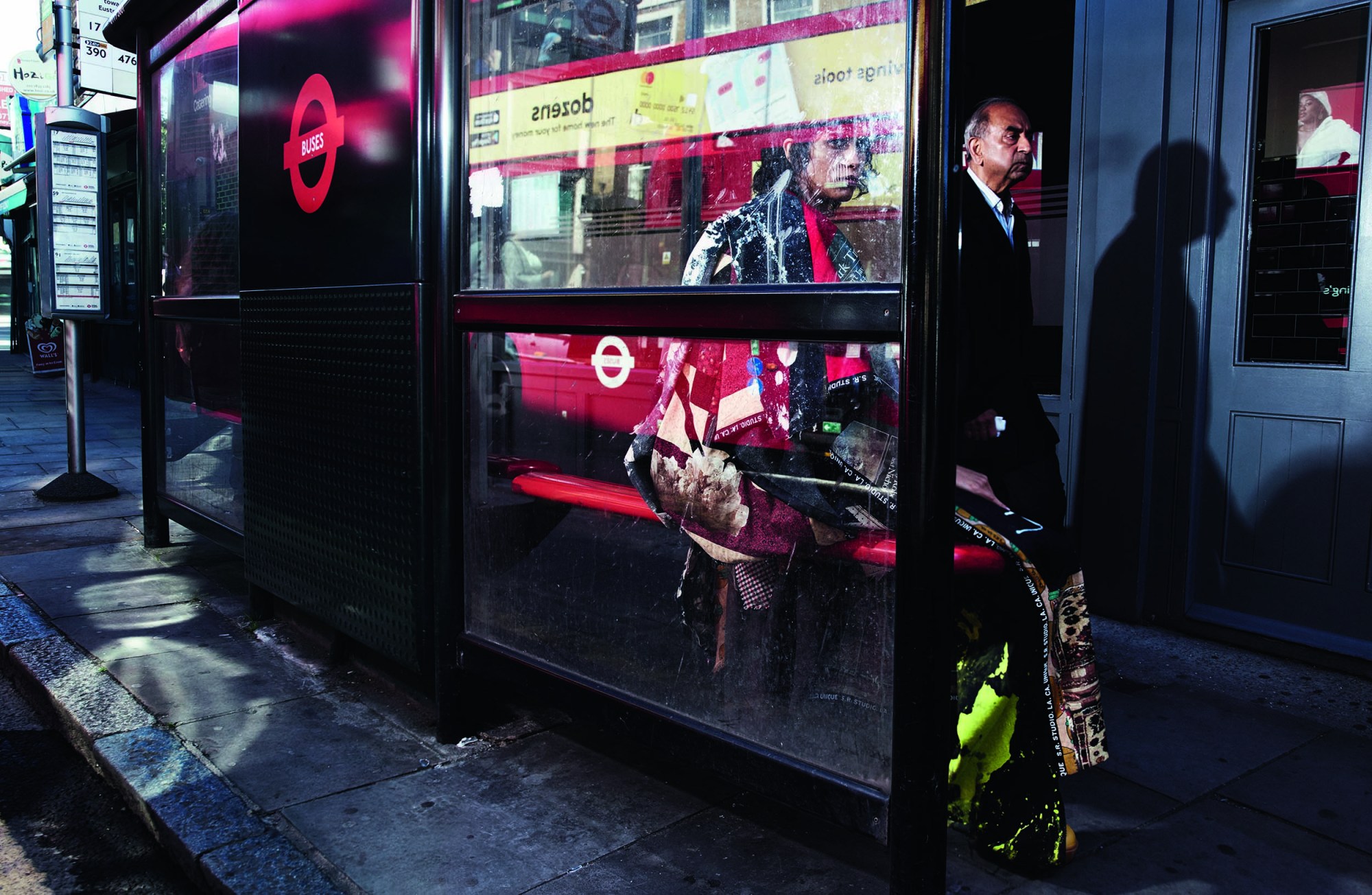This story originally appeared in i-D’s The Post Truth Truth Issue, no. 357, Autumn 2019. Order your copy here.
On 17 June 2019 Le Pagliere, a 19th century hay manger in the heart of Florence, pulsed with an electrifying experiment in fashion-craft and catwalk theatre from Sterling Ruby. As he unveiled his new fashion project, S.R. STUDIO. LA. CA., the prolific LA-based multidisciplinary artist provided the standout show of the spring/ summer 20 men’s season.
Whether it’s with glossy and colour-saturated poured-polyurethane sculptures, dark drawings, richly glazed ceramics, graffiti-inspired spray paintings or drone-shot video works — throughout the 20 years of his eclectic and uncompromising practice, Sterling Ruby has explored the triumphs, tragedies and weirdness of the American experience across an ever-evolving range of media. Whatever the medium, he has long delighted in the duality between the fluid and the static, the minimalist and the expressionist, the pristine and the filthy, the dream and the nightmare, creation and destruction.
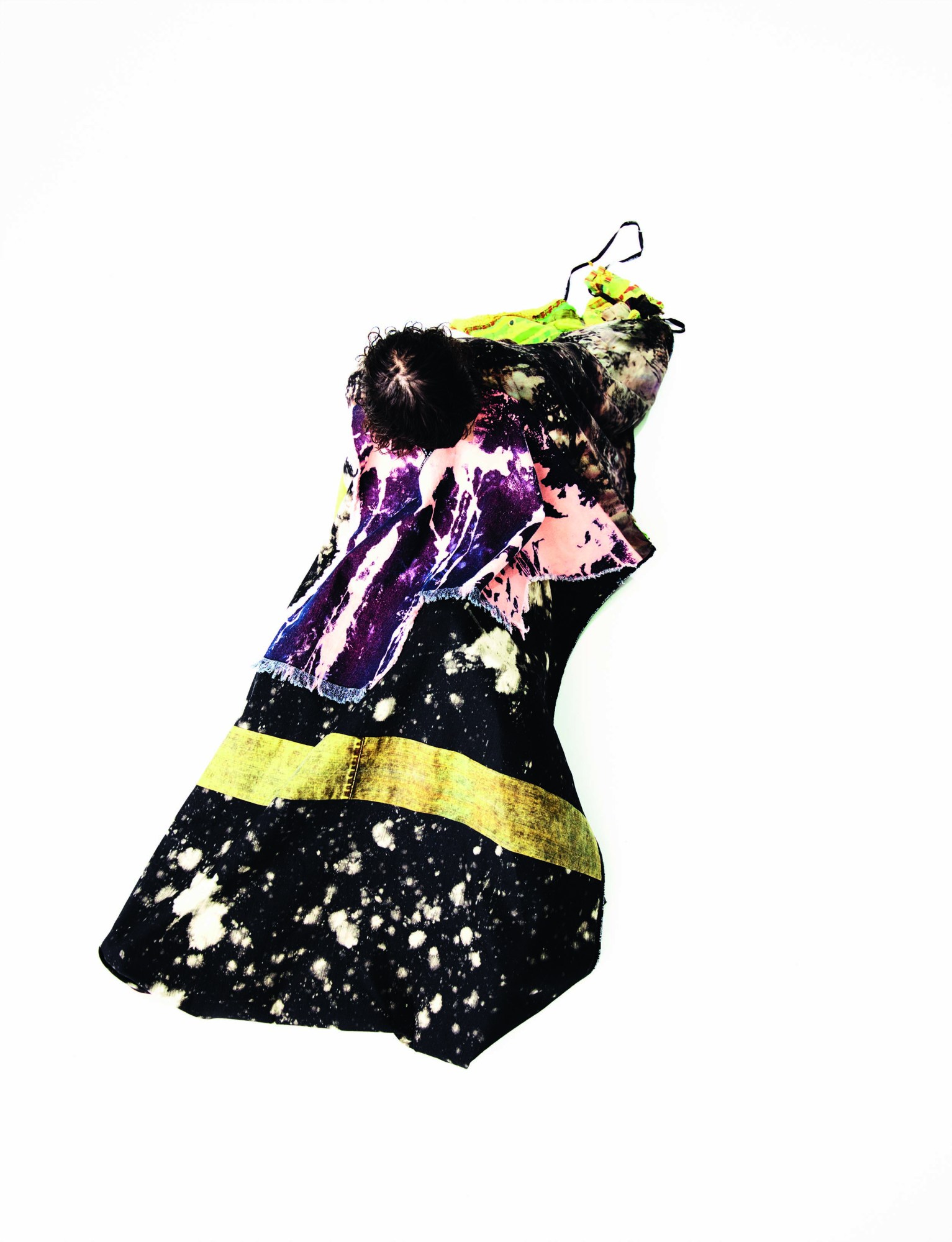
Sterling credits this visceral provocative playfulness to his childhood in rural Pennsylvania, describing himself as “a problematic kid who absolutely hated where I lived, which was this macho community in the middle of nowhere.” Channeling this outsider spirit into his art, Sterling been described as “one of the most interesting artists to emerge in this century” by the New York Times art critic, Roberta Smith. Now, after his standalone catwalk debut, we’d say he might also be one of the most interesting fashion designers to emerge too. And we’re not alone. “That was the best new-person collection I have ever seen,” Suzy Menkes, the world-renowned critic who has reported from the front lines of fashion for more than three decades, declared as she joined us backstage in the post-show circle of iPhone-wielding interviewers.
“Making clothing started out very privately. Wearing it personally, and occasionally gifting it to friends, it w as really only seen by the people closest to me.” Sterling Ruby
Throughout his varied artistic practice the constant has been an assault on materials and social structures, referencing marginalised societies and maximum-security prisons, modernist architecture, artefacts and antiquities, graffiti, bodybuilders and warfare, cults and gangs. There are artists who are known for a repetition of gesture or form, like Francis Bacon or Clyfford Still, whom Sterling admires, but the allure of working across multiple mediums is too great for Sterling. “I don’t like one material in particular,” he tells us in a soft voice behind a mischievous smile, “I switch from one thing to another because I am restless.” Fortunately, this restlessness has led him to fashion.
While many assume that Sterling’s relationship to clothing design evolved from his collaborations with Raf Simons, it actually all began when he was just 13 years old. After his family relocated from Baltimore to a farm in a town called New Freedom, Pennsylvania, he took up sewing. While his friends were at football practice, a teenage Sterling would sit at his mother’s Singer sewing machine, making early versions of the spliced and sewn fabric pieces that have since become a signature of his work. “My mother sewed, my grandmother sewed, my aunts sewed,” he tells us. But even then, his urge to craft and create was always coupled with a desire to deface, destroy and reimagine. He spent his time “cutting off the sleeves and collars, patching them back together, then adding hand-painted and stenciled materials,” and pulled inspiration from the fashion of punk scene that soundtracked his coming-of-age. “I remember my mother being upset with me because I kept bending her bobbin and needle clamp,” Sterling recalls.
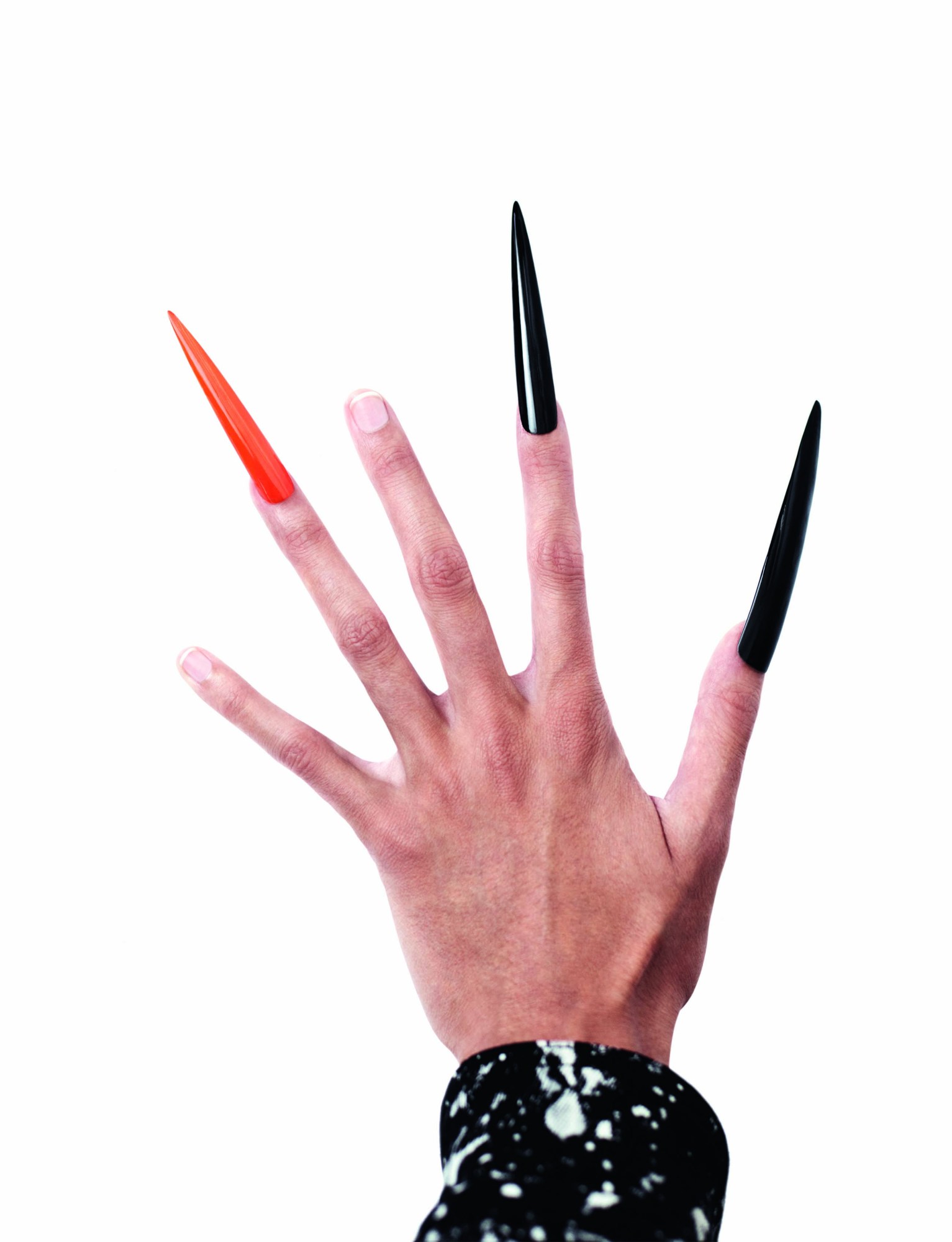
“I’ve always been interested in the behavioural power that comes with clothing,” Sterling explains. It was an interest sparked by the sight of seeing H.R. from Bad Brains dressed in double denim, Black Flag’s Gren Ginn in his favoured Oxford shirts and Henry Rollins in black running shorts when a teenage Sterling made trips to Baltimore and Washington to watch his hardcore punk heroes. For as long as he can remember, he has been exploring garments as a medium that impacts the way we can think, feel, and move. “This project, making clothing, started out very privately,” he adds. “Wearing it personally, and occasionally gifting it to friends, my clothing was really only seen by the people closest to me.” Whether backstage at a Rick Owens show or at one of his exhibition openings, whenever we’ve crossed paths with Sterling, he’s been wearing his own garments.
Beyond these private explorations, most people will cite his acclaimed collaborations with Belgian designer Raf Simons — who attended the debut show, as did Virgil Abloh and a who’s who of the art world — on numerous projects for Dior, Raf Simons and Calvin Klein. The kindred spirits first met back in 2005, when Raf visited Sterling’s studio and bought one of his layered, volatile, ceramic pieces, which resemble coloured placentas. The pair became close and one of the most significant cross-disciplinary unions in fashion history was formed. It was an exchange that went beyond collaboration — it was a friendship, a creative brotherhood that saw Sterling bleach denim for Raf Simons’s Tokyo store in the mid 00s; Raf reinterpret a Sterling triptych in his debut Dior couture collection in 2012; the co-designed and branded Raf Simons / Sterling Ruby autumn/ winter 14 collection; and Raf affording Sterling free creative reign to reimagine the Calvin Klein 205W39NYC flagship stores and show venues. Pieces from the duo’s co-signed collection are considered to be among the most sought after pieces of the past decade. A limited edition, handpainted trench coat is currently on-sale at $50,000 on grailed.com. But throughout Sterling’s personal practice, many of his works have integrated textile and quilted fabrics, further reflecting the artist’s sincere interest in material’s expressive potential.
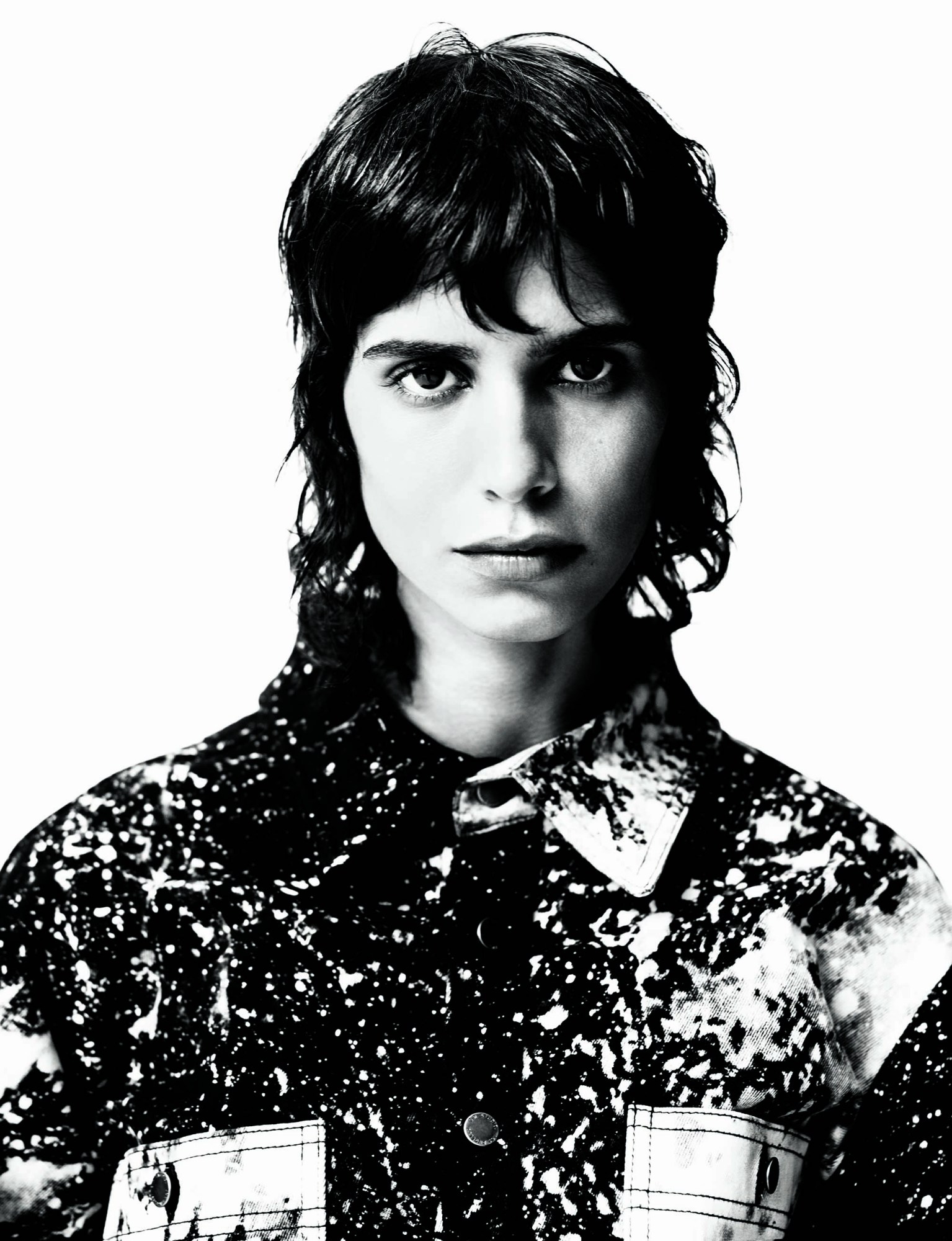
In the immediate aftermath of that Raf Simons / Sterling Ruby show, Sterling described how excited he was by the fashion system. “Everybody was standing up, cheering. At that moment I thought, Fuck being an artist — this is wonderful.” Five years after his self-realisation, we thought: fuck Sterling being just an artist, he’s one of the fashion industry’s most exciting talents too.
In a sense, Sterling has come full circle with S.R. STUDIO. LA. CA., as clothes-making was one of his first artistic pursuits. Over the course of the last decade he has continually returned to the spirit of his teenage wardrobe. “I have to say that I’ve almost reached a point where I only wear what I make,” Sterling told us back in 2016, when his studio uniform experimentations were presented in Work Wear: Garment and Textile Archive 2008-2016 at Sprüth Magers’s London gallery space. “I still have some other clothes, plain Margiela sweatshirts, a bunch of Raf’s pieces, of course, and Dries,” he added, “but I would say 90 percent of what I wear is what we make in the studio.”
Initially, it was created almost as a uniform for his studio staff and assistants and he was drawn to this concept of the team being camouflaged in his craft. His early pieces mutated out of his sculptures and paintings, self-cannibalised from off cuts of the bleached and torched fabrics and canvas that made up his paintings, and the S.R. STUDIO. LA. CA. debut is a direct descendent of these workwear experiments.
Like much of his autobiographical artwork, S.R. STUDIO. LA. CA. probes the American dream (and nightmare). It has opened up his private world and wardrobe and encouraged us all to dress in his hopes and fears and realities. Two of the tunic dresses featured images shot by Sterling’s wife, Melanie Schiff. A vinyl tabard showcased the cover of a book called Hex, which is about the Pennsylvania Dutch community from which he comes. US flag decals appeared on denim.
This powerful collage of Sterling’s past, present and future was amplified with a casting made up his friends and family, including the actress Mackenzie Davis and her partner, the artist and former studio staff member Augustus Thompson. Designer and curator Clemande Burgevin Blachman, studio staff member Sonja Bartlett and Raf Simons’s longstanding right-hand man, Pieter Mulier. “In doing a show for the very first time, I wanted to preserve the intimacy of where it came from,” Sterling says. “It meant a lot to me to have friends and family around for Pitti, to really be a part of the entire experience, from the backstage to the runway.”
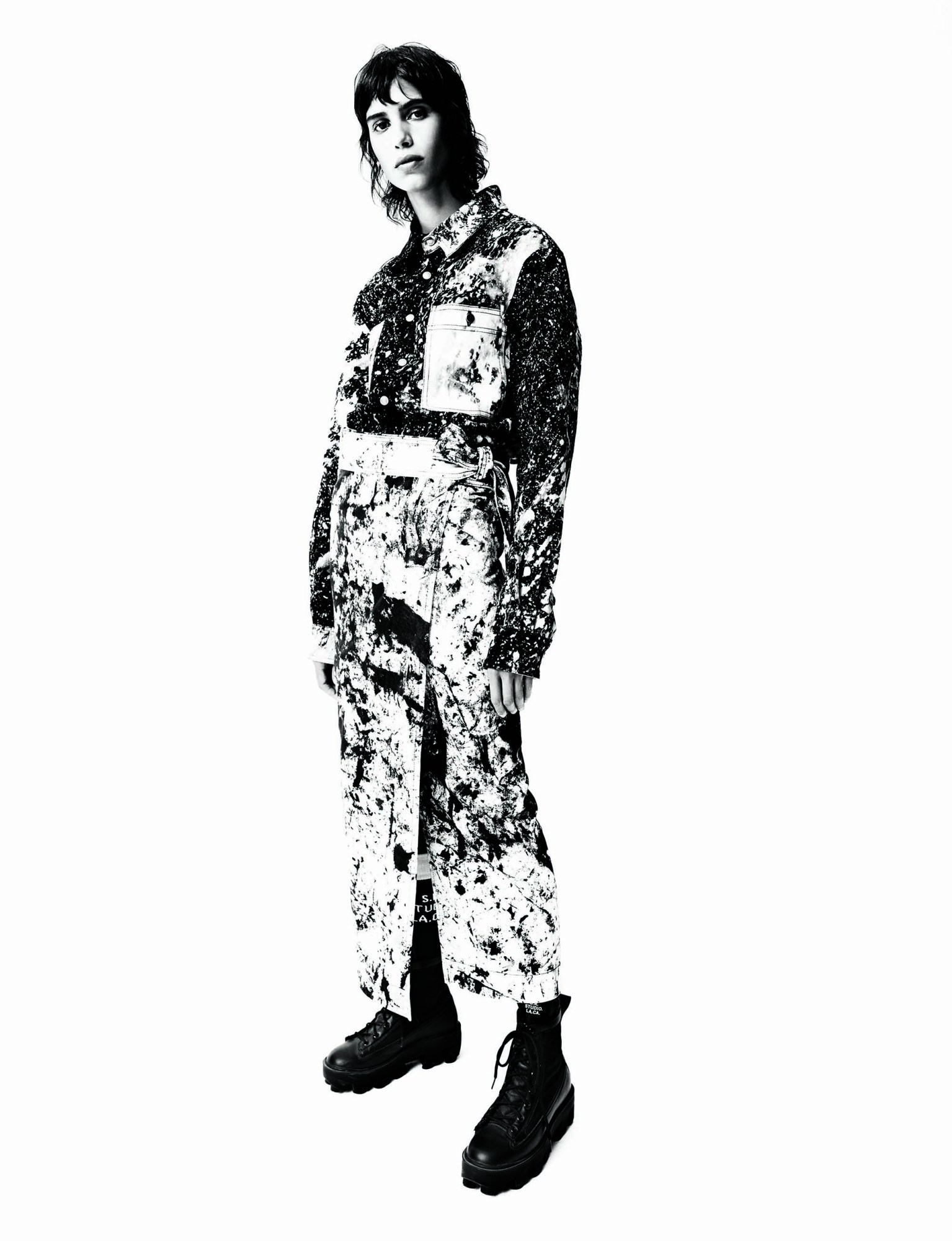
“Sterling is a family guy,” model Sonja Bartlett told us after walking the show. “He runs his studio like a family business.” Like so many of the people who work with him, Sonja has been at the studio for several years and it was important for Sterling to have his nearest and dearest around him as he turned the page on to a new creative chapter.
“My boyfriend is Tyler [Britt], Sterling’s studio director, so I’m a relatively new member of the family, but the way everyone has brought me in has been incredible and it’s made this experience so wonderful,” the actress Sonja Maura tells us. “His clothes make me feel ready to work, elegantly,” Sonja Bartlett adds. “I feel hot and strong,” Sonja Maura counters as she points out the theme of feminine strength that runs throughout the women’s pieces. “There are so many different characters and moods explored in the collection and my look feels like an old Céline Morticia Addams look, so it made me stand up straight and feel powerful,” actress Mackenzie Davis adds with a smile.
Reacting to fashion’s practical production demands, S.R. STUDIO. LA. CA. is split into four collections: the main line; ED 50 which is a rotating selection of limited-edition pieces made in quantities of 50; SOTO which encompass garments made from fabric handworked by Ruby’s studio; and UNIQUE, one of a kind pieces designed by Ruby. The handworked denim crafted from specialised fabrics and activated by the elements, graphic T-shirts featuring limited edition heat transfer prints and one-of-a-kind collages created by Ruby and sewn in his Los Angeles studio that make up the main line were available to buy the day after the show, exclusively on SSENSE. “In many respects, outside of the logistics of putting together the collection and the garments themselves, I don’t see garment creation as any different to making a sculpture or painting,” Sterling explains. “But it’s fun to think of something going out into the world, and moving, and being something for people to see.”
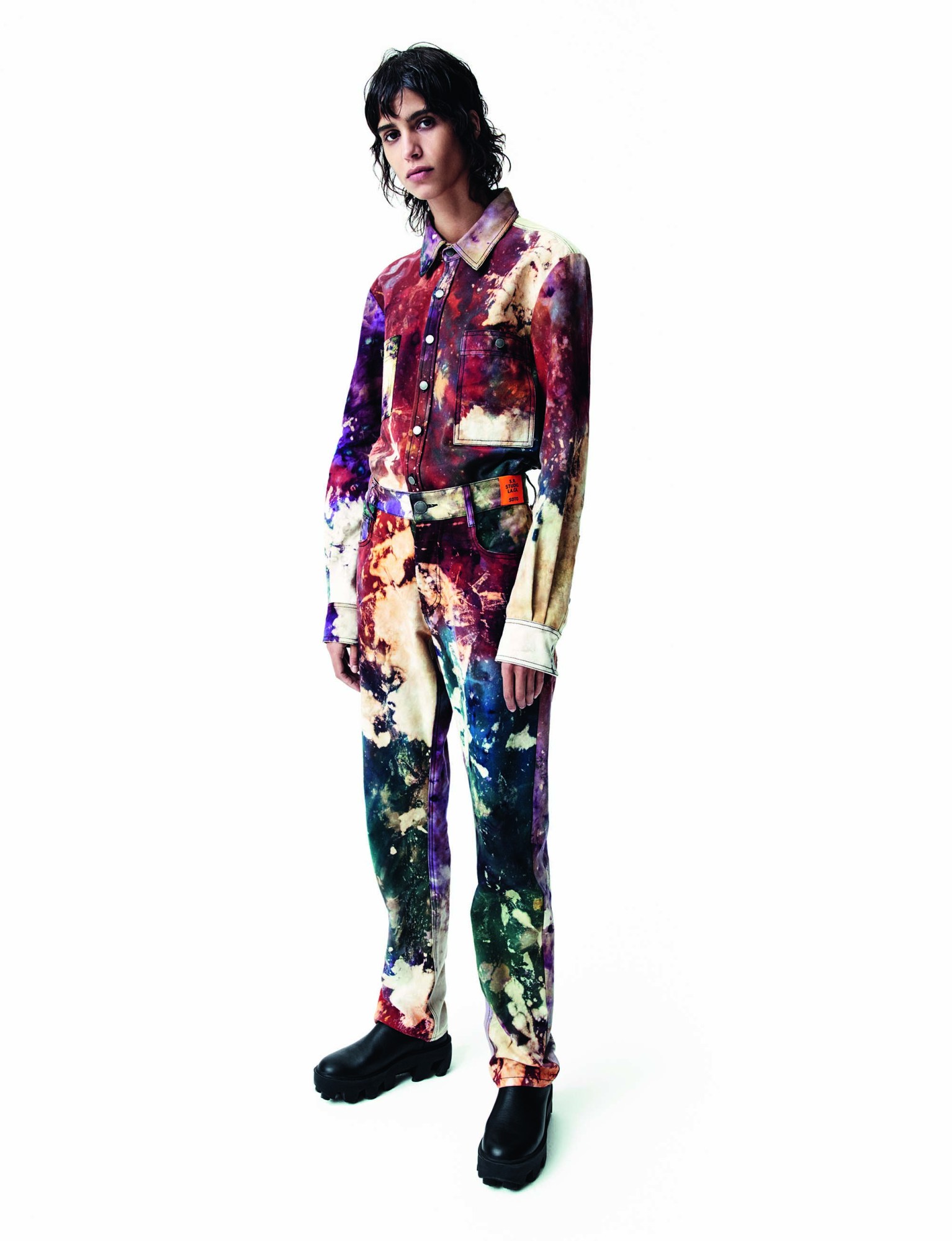
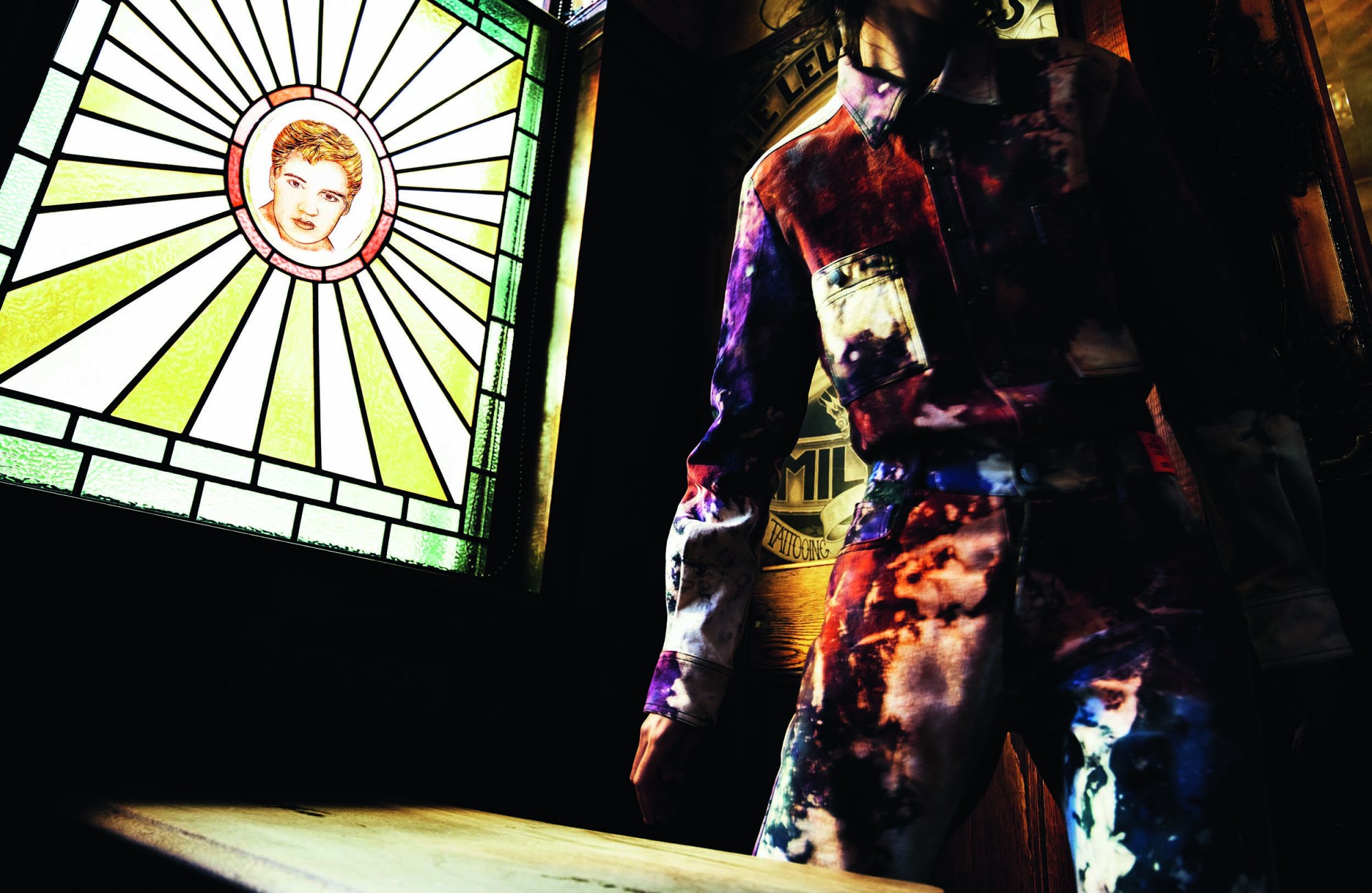
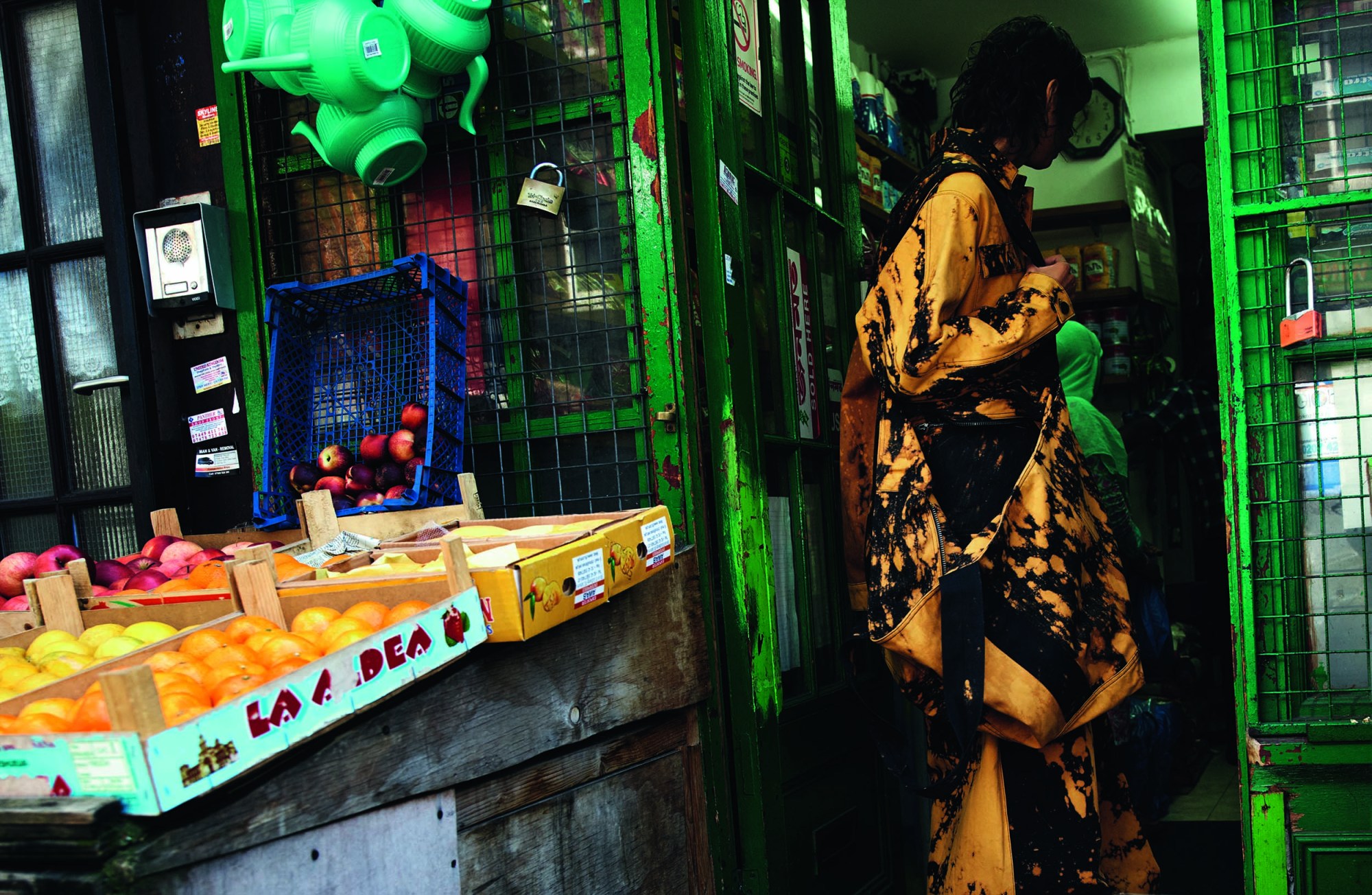
Credits
Photography Willy Vanderperre.
Styling Alastair McKimm.
Hair Anthony Turner at Streeters.
Make-up Lynsey Alexander at Streeters using Lancôme.
Nail technician Ama Quashie at Streeters using CHANEL
Le Vernis Pure Black and CHANEL La Crème Main.
Set design Emma Roach at Streeters.
Photography assistance Romain Dubus, George Eyres, Tomo Inenaga and Louiws Headlam.
Digital technician Henri Coutant.
Styling assistance Madison Matusich.
Hair assistance Claire Grech.
Make-up assistance Phoebe Brown.
Set design assistance Nia Samuel Johnson.
Production Ragi Dholakia Productions.
Production assistance Claire Huish, May Powell, Nina Parsons and Louis Courts.
Casting director Samuel Ellis Scheinman for DMCASTING.
Model Mica Argañaraz at DNA.
ALL CLOTHING S.R. STUDIO. LA. CA.
